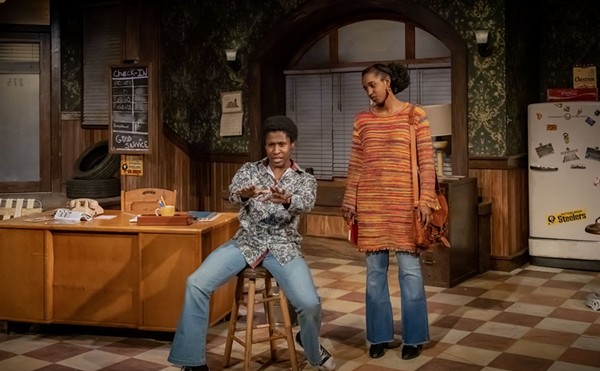CAN Journal, the Northeast Ohio journal of visual arts published by working creators, is celebrating its second year of printing this summer. An era of stretched economics — as money flows away from the arts — might seem like an inopportune time to launch a journal of aesthetics. However, the journal was conceived as a means for art institutions to band together in hard times.
Liz Maugans, director of the fine-art print workshop Zygote Press, remembers how the recession came to the Cleveland art world. She says she was attending a conference sponsored by a regional culture nonprofit with a long view of shifting economic climates, and which wanted to see as many creative institutions survive the coming dry spell as possible.
For one session, attendees were asked to attend the presentation fitted to organizations of their own scale.
"For those with $2 million budgets and over, they sorted them in one place, and asked those with $500,000 budgets to go to another place," says Maugans.
This left Maugans, whose Zygote operated on only $80,000 a year, no place to go — and her situation was hardly atypical. Despite their prevalence, smaller and mid-sized galleries and workshops were hard pressed to find outside advice on surviving in environments with shrinking resources.
"I realized we very much have to solve these issues on our own. We all have a lot of the same problems," says Maugans.
At the same time, as publishers saw falling readership and revenue, journalistic and critical coverage of visual arts withered quickly. This was probably tracked by no one more closely than Michael Gill, a longtime journalist writing on the arts in Northeast Ohio.
"At one point, there was Avenues, Cleveland Magazine, Northern Ohio Live, Artifact, and Urban Dialect. Almost all of that is gone. There was seven-days-a-week arts coverage in The Plain Dealer. That's gone," says Gill.
Artists and curators had less power to promote themselves, and art journalists and critics had fewer places to write. In this "combination of circumstances" and "combination of needs," Gill and others saw the opportunity to found a new publication.
Maugans had helped organize the Sustainable Arts Leaders Talks, a discussion group and resource and personnel-sharing collaborative among area gallerists. She brought that organization to Gill, and members started planning a one-off pamphlet containing brief but deep profiles of member galleries, to be distributed out of their own spaces.
After securing support from the Ohio Arts Council, SALT was rechristened the Collective Arts Network, and CAN Journal rolled off the presses in January, 2012. In Gill's words, it was meant to serve as a "one-stop shop" for news on the arts, a compendium some curators had been hoping for to ease viewers' browsing.
"In one source, instead of 500 postcards, you get a snapshot of everything that's happening in art in Ohio...That becomes a way for audiences to meet each other," says William Busta, owner and director of the William Busta Gallery.
The initial one-off proved so popular that CAN's leadership decided to continue the publication as a quarterly. The next issue went with a slicker design than the newsprint tabloid of the original. As more issues rolled out, gallery profiles were joioned by longer, more searching works of reporting, criticism and cultural commentary by figures like art historian Henry Adams and artist-critic Douglas Max Utter, and Gill himself. The number of contributing galleries has increased from 28 to 50, including regional titans like the Museum of Contemporary Art Cleveland and Cleveland Museum of Art.
Yet despite growing patronage and enthusiasm, CAN's leadership sees much work ahead in expanding their reach. The journal prints about 10,000 copies of each issue, and does so with only three part-time staffers: Gill serves as editor and publisher, JoAnn Dickey is the designer and Carlos E. Ramos handles ads and sales. The magazine has a $60,000 annual budget, and Maugans says it's a struggle to make sure the part-timers and contributing writers are justly compensated.
Gill says it is a long-term goal to make the magazine financially independent, sustainable from member contributions, ad sales and fundraisers. Currently, from the point of view of the IRS, CAN Journal is a project of Zygote Press; soon, the St. Clair Superior Development Corporation will be its new fiscal agent.
Independence, paradoxically, will mean greater community support. To that end, Maugans is working to develop TEDx-style talks at local bars, and other events with area writing clubs and development organizations. The organization is also holding its first benefit party this Saturday, Y2CAN, at Josaphat Arts Hall. She indicated it is CAN's goal to enlarge, rather than maintain or energize, arts patronage.
"We want to expand beyond the converted," says Maugans.











